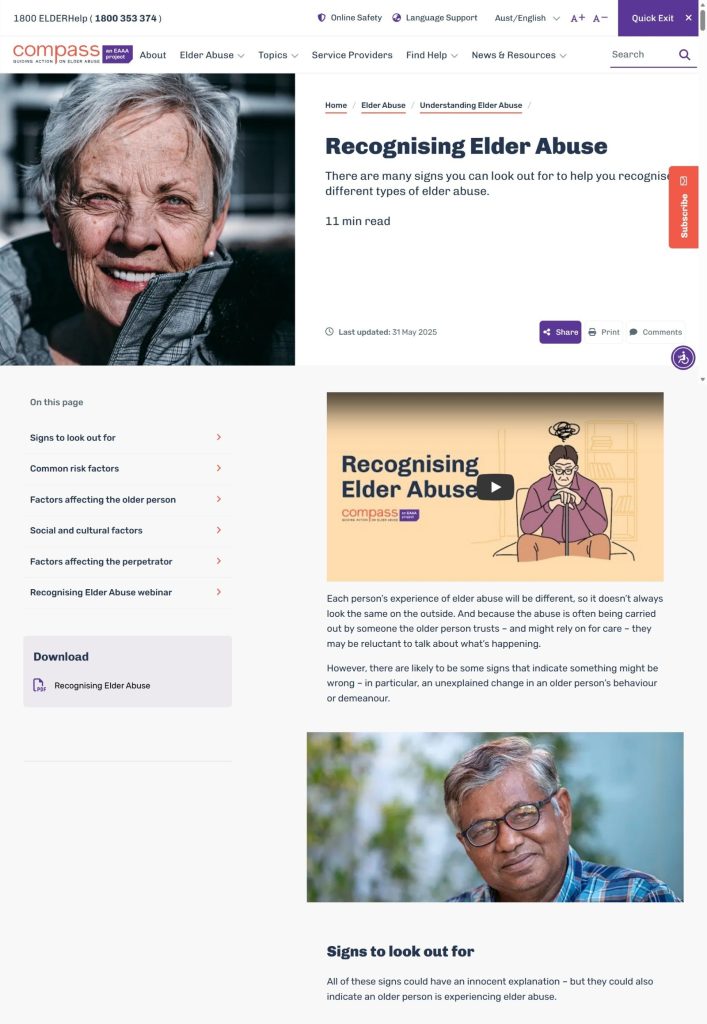The content on this page has been updated to align with the new Aged Care Act, which came into effect 1 November 2025.

The World Health Organization defines the abuse of older people – or elder abuse – as ‘a single, or repeated act, or lack of appropriate action, occurring within any relationship where there is an expectation of trust which causes harm or distress to an older person.’
There are five main forms
- financial
- psychological (including social isolation)
- neglect
- physical
- sexual.
Different forms of abuse can co-exist. For example, coercing a person to sign a document is both financial and psychological abuse.
Signs that an older person may be in an abusive situation include
- Seems depressed, confused, or withdrawn
- Isolated from friends and family
- Has unexplained bruises, burns, or scars
- Appears dirty, underfed, dehydrated, over- or under-medicated, or not receiving needed care for medical problems
- Has bed sores or other preventable conditions
- Recent changes in banking or spending patterns.
Elder Abuse. Know the signs
Watch the Australian Human Rights Commission video about the different types of abuse of older people and the signs. Click on the ‘CC’ button to turn on captions and the ‘Youtube’ icon for full screen.
Documents and external links
Learn more about identifying abuse. These documents and websites offer help, strategies, and practical information. Brief descriptions are provided for each document or link.

Defining elder abuse
The abuse of older people can be complex. Read this important Compass resource to help understand it further.

Recognising elder abuse
Read this Compass resource which goes into the characteristics older people who experience abuse are likely to exhibit.



